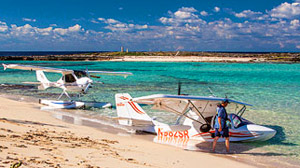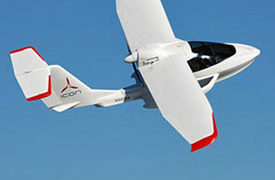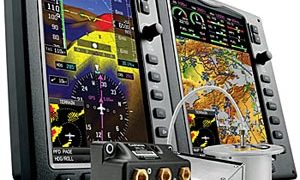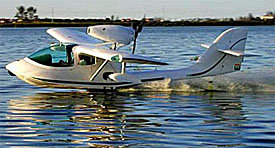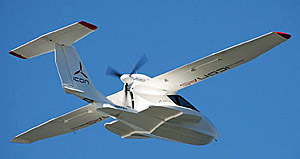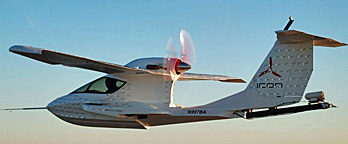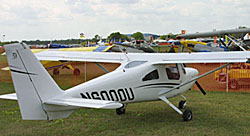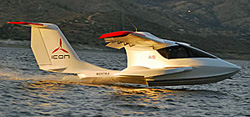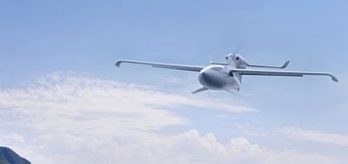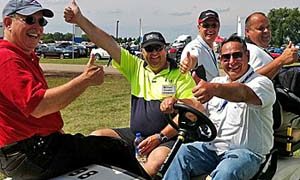“Isn’t it just a niche market?,” asked a reader in a recent email. The query came after he read about a flurry of new seaplanes and the writer wondered if it could be worth all the investment pouring in to these projects. Development progress in this particular sector-within-a-sector (LSA seaplanes) seems to be far outdistancing development in other parts of the aviation world. So, are efforts to develop increasingly sophisticated LSA seaplanes economically justifiable? It’s a worthy question. Another answer: “Well, why not?” An amphibious LSA seaplane can land on water or land, could fly as fast or nearly as fast as a land plane. They can look cleaner with gear that disappears. They already have another 110 pounds to work with (though admittedly much of that is needed simply to achieve an amphib seaplane and even that is not enough for all manufacturers). If you want an LSA, why not one that’s more versatile?
Search Results for : Icon A5
Not finding exactly what you expected? Try our advanced search option.
Select a manufacturer to go straight to all our content about that manufacturer.
Select an aircraft model to go straight to all our content about that model.
Light Aircraft Weight … More or Less?
Several aviation sources recently carried news about Icon Aircraft and their A5 LSA seaplane development. Icon Aircraft has been waiting — surely with increasing impatience — for FAA to answer their formal request for exemption to the Light-Sport Aircraft gross weight parameter. FAA normally replies in 120 days, however, more than a year passed and all that arrived was a request for more detail. One can imagine the cries of angst at Icon. Many have wondered when (or if) this handsome aircraft will go to market but if you were part of their leadership, what would you go into production with … a 1,430-pound seaplane or one at the new requested weight of 1,680 pounds? Either way, what if FAA later changed their mind about an exemption they might grant. Recent news about the IRS makes us all aware government agencies don’t always operate as we expect. What a vexing situation for Team Icon.
Garmin Team X on a LSA Development Tear
Next month, in April 2013, the Light-Sport Aircraft industry celebrates an anniversary. It will be the eighth year since the first Special LSA approval was granted by an FAA Designated Airworthiness Representative in 2005. Evektor‘s Sportstar was first, followed hours later by the Flight Design CT and then an amazing outpouring of innovation now stretching to 131 SLSA models approved. That’s better than four brand new aircraft every quarter for 32 straight quarters; worldwide aviation’s never seen anything like it. Most of the early brand names in the industry were new, at least to Americans. Yet along the way, some famous aviation names joined the party.
We’ve seen entries from Piper, Cirrus, Cessna, Lycoming, Sensenich, and Wipaire Floats plus the major member organizations embraced Light-Sport in their own way. One multibillion dollar company to serve the sport and recreation community has been Garmin.
LSA Seaplane Invasion …Can It Happen?
What’s going on out in the marketplace? More than any time since the launch of Light-Sport Aircraft in 2004, I have not observed such a frenzy of activity for a particular niche, this time for LSA seaplanes. Next season, in 2013, we could see no less than nine entries; three brand new and that count does not include any LSA equipped with floats, possibly adding several more. Yet some major potholes appear in the runway… or perhaps that should be waves sloshing over the bow.
One entry is a return of a LSA seaplane previously seen in the USA as the Freedom S100 (SLSA List #44) yet can it reenter the market without a full FAA audit? See Update at end. A new agency directive with the catchy name 8130.2G CHG 1 may require a FAA visit to Spain but who knows when that might occur, given the likelihood of an FAA budget cut through the political process known as sequestration, part of the so-called “fiscal cliff” the mainstream media drones on about endlessly.
Discussion: LSA – Primary Category – Part 23
Since AirVenture 2012, I’ve been part of several discussions about the way — and reasons why — aircraft become certified. Sound boring? Yes and no. One way this might get your interest is to consider if Icon could join Cessna in going Primary Category instead of LSA. Disclaimer: I have no info about any such decision from Icon; this is merely a discussion. Perhaps even more to the point is the price of airplanes based on their certification cost.
*** COST Some informed estimates from knowledgeable persons suggests the cost of taking a fully designed, tested, and otherwise ready LSA through the full process of ASTM approval including the manufacturing process may be the cost of one airplane at retail. In other words, it might cost $125-150,000 to “certificate” a new LSA, after all design work and testing has been done. A weight shift trike might cost $80,000 as ASTM standards are somewhat simpler for those aircraft types.
Is “Spin Resistance” a Big Deal? Well, Yes!
On Memorial Day I had a chance to visit Icon Aircraft and spend some time with CEO Kirk Hawkins. We met seven years ago — just after the SP/LSA rule was released — near the beginning of his ambitions to create an entirely clean-sheet LSA amphibian.
*** Recently, Icon released the video appearing below to tout their spin resistant airframe (or SRA). Aviation and mainstream media jumped on this story and you may see other reports. I reported work toward this earlier and it’s been some time coming. Why the wait? From my first-hand experience with Cirrus Design and the development of their SR20, I have a bit of inside knowledge on this subject.
*** Cirrus also tried to grab the golden ring of SRA, as did their then-close competitor Columbia Aircraft (the two companies won their Part 23 Type Certificate within days of one another). Neither succeeded.
LSA Highlights from Sun ‘n Fun 2012
Whew! It’s over. Man, Sun ‘n Fun can be the busiest six days of one’s life… well, at least until the next one. In this survey article, I want to skim the very top of what I found interesting at the recently concluded show. Each highlight will get fuller coverage. Before starting, though, I owe a couple shout-outs. *** A huge, enormous thanks to Jim Lawrence who kept you up on a daily basis. Accomplishing that means long days shooting photos, interviewing personalities, and working into the night in a motel room with a crappy Internet connection. It may look easy and fun but only half that assessment is true (hint: it ain’t easy). *** Secondly, another thanks-a-million to UltralightNews, my video collaborator. I have the easy job; they will put in an enormous number of hours to edit and finish more than two dozen new videos that I’ll post here as each is done.
Beauty and the Bird — Do Esthetics Matter?
Even those who are not Apple fans agree the trend-setting California company’s focus on design beauty draws attention to their products. From their position near the back of the pack a dozen years ago, Apple has become the most valuable tech company in the world. Could this be due to their highly-refined sense of esthetics? More to the point of aviation enthusiasts, is artful design an ingredient in pleasing customers? *** I don’t know what all buyers are thinking but beauty has long enhanced the appeal of most consumer products. It seems the so-called niche aircraft producers have gotten this message perfectly well. Especially this is true for those products that have emerged since Light-Sport Aircraft burst upon the aviation scene. *** Creators of new LSA seaplane designs in particular seemed to have found the religion of design esthetics. Icon leads the pack with their stunning — and extremely well presented — A5.
Three If By Sea
Some bright minds at LISA Airplanes, a French company, had a great idea to take the hydrofoil concept and apply it to an LSA seaplane. I’d often wondered why hydrofoils haven’t been done before, it’s such a great concept.Anyway, the airplane is the AKOYA. The technology for the entire package is patented and called Multi-Access, not the most sizzling name but what the hey, look at how cool those little moustache water wings look sticking out from the hull! *** Now get this: the company claims AKOYA operates as easily from land as from water…or snow! First, to those water wings sticking out: they’re called Seafoils, a trademarked name, which adds a little more marketing sizzle to this steak. *** They’re connected to a retractable gear that can be rigged with wheels or skis, I guess, and also to motor-driven, pivoting wings! There’s also a chute onboard. Very neat.
Broad Smiles After AirVenture Oshkosh 2011
Reports continue positively for results at AirVenture 2011… despite FAA’s partial shutdown, a media frenzy over the USA’s debt ceiling, a roller coaster ride in the stock markets, and a continuing bum housing market plus general uncertainty. If you can smile after all that, things must be improving. *** GAMA’s report of Type Certified aircraft deliveries for the first half of 2011 shows sales remain far below manufacturing capacity. Thanks significantly to Cessna’s hastened deliveries of Skycatcher, the LSA sector is surviving a bit better; of course, LSA sell many less units than GA and account for much smaller dollar volume. Here’s more evidence of improvement… •• Icon Aircraft announced they secured 143 delivery position sales ($286,000 raked in) at AirVenture for their sexy new A5, expected on the market perhaps by 2012. Icon generously donated 10% of the take to EAA Young Eagles program. •• Flight Design continues to log orders for its LSA but their new four seat C4 has now garnered nearly 100 delivery position orders (at $7,000 apiece).


